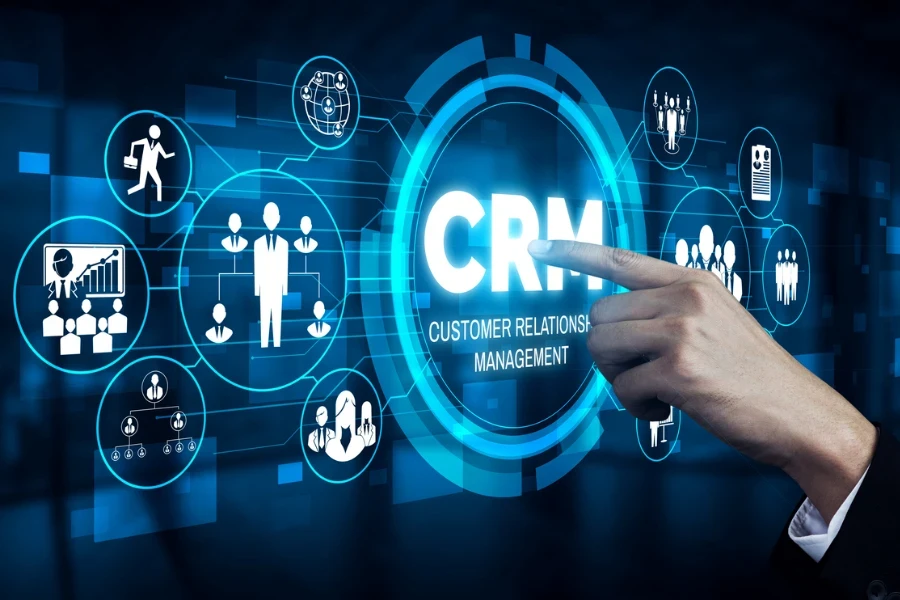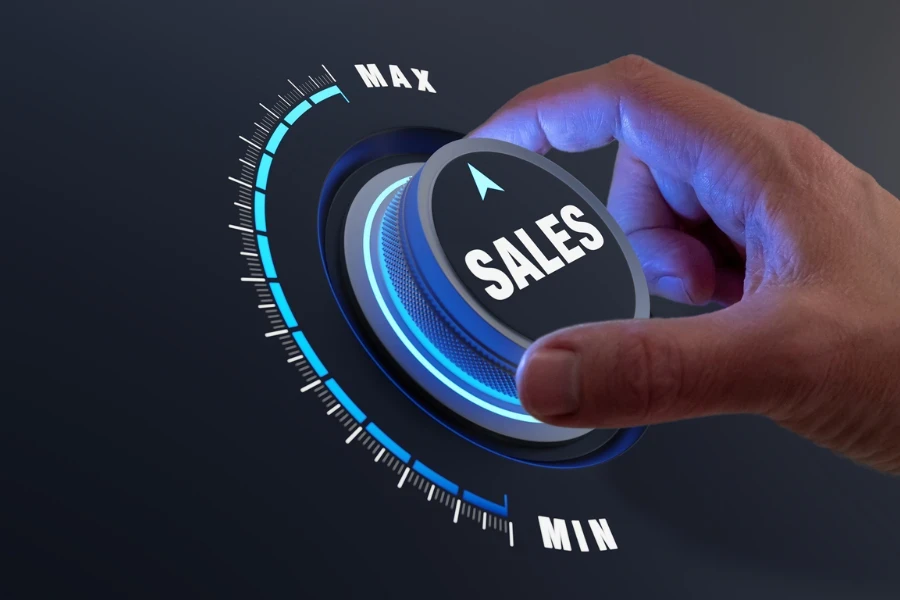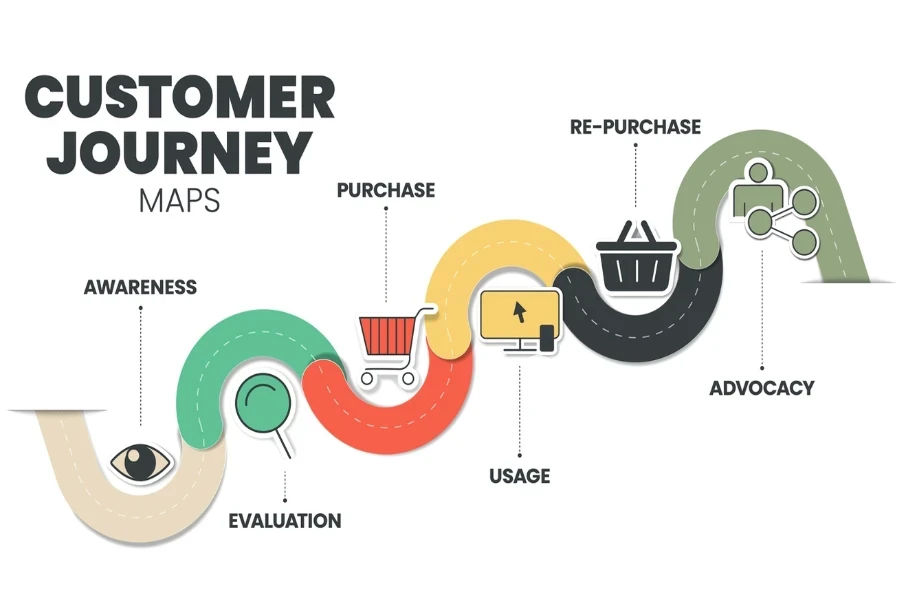As a business owner, you may have heard the terms CRM and CEM thrown around a lot. On the surface, they seem similar and have something to do with your customer, right?
But dig a little deeper, and you will find that while customer relationship management and customer experience management are related, they are quite different. Understanding the distinction between these two concepts is key to building lasting relationships and providing great experiences that keep customers returning.
In this article, we will break down CRM versus CEM in a straightforward way so that you can figure out which approach is right for your business.
Table of Contents
CRM & CEM: What’s the difference?
What is CEM & CRM software?
Objectives of CRM vs. CEM
Functions of CRM & CEM
Benefits of CEM vs. CRM
CEM best practices
CRM best practices
Ways CRM & CEM work together
Conclusion
CRM & CEM: What’s the difference?
Customer relationship management

Customer relationship management involves how you manage your relationships with your customers, right from the first interaction to maintaining the relationships over time.
The goal of CRM is to provide you with a full picture of each customer, that is, knowing their entire history with your company so that you can personalize how you communicate with them.
Companies use CRM to strengthen their relationships with clients, which keeps them happy and loyal in the long run. According to experts, the global CRM market size was worth US$ 64.41 billion in 2022 and will grow from US$ 71.06 billion in 2023 to US$ 157.53 billion in 2030 at a compound annual growth rate (CAGR) of 12%.
There are a few elements of CRM unique:
- Customer data management: CRM manages customer data in that it helps businesses use what they know about their customers to understand better what they need and how they act.
- Sales and marketing stuff: Customers should get information that is actually useful to them. With CRM, it helps you figure out the best way to message each customer and eventually skyrocket your sales.
- Support provision: Customers will have questions or problems at different points. Through CRM, you can address their issues proactively at each stage, therefore ensuring your customers are happy and satisfied.
- Analytics and reports: CRM provides analytical and report data, which lets you track how customers interact with your business and see what’s working. With this data, it becomes easier to optimize your strategies to help your business scale.
Customer experience management

On the other hand, customer experience management is all about making sure customers have good interactions with your company. It is a process for designing and managing everything your customers go through when dealing with your business.
When running a CEM program, you may be eager to know the things that are frustrating for customers and come up with ways to improve the problems and enhance their overall experience.
Like CRM, customer experience management has its aspects it focuses on. They include:
- Understanding who your customers are and what they need. A CEM platform will gather and analyze critical data to get insights into what drives them and how they behave.
- CEM is also big on mapping out the whole customer journey and where it’s not going smoothly. This enables you to work on making it better.
- CEM helps get all your frontline team fully prepared to give great service and support. Therefore, it enables you to train and empower them to deliver a pleasant experience for your clients.
- Another big thing is making sure customers get what they want, no matter if they use your website, store, or app. It ensures your omnichannel is on point.
- Finally, CEM assists you in getting all customer data and analytics to personalize things for each person and send them targeted messages.
What is CEM & CRM software?

Customer experience management software aims to strengthen customer loyalty and retention by managing the creation and delivery of experiences. The systems collect data, and the metrics and insights from the platform provide information on what customers like and don’t and where improvements could be made.
Examples of CEM platforms you will find in the market include CustomerGauge, Medallia, Qualtrics, and Inmoment. There is a growing demand for these systems globally following a valuation of US$ 11.43 billion in 2022, which is forecast to reach US$ 48.56 billion by 2032, growing at a CAGR of 15.6%.
Conversely, CRM software primarily collects data about customers from a company’s perspective. The system collects data such as customer’s names, contact details, purchase histories, and records of communication with the company through phone calls, emails, texts, and chats.
Customers may provide some of this information by filling out forms, but companies categorize this data within their CRM systems. Companies can then use the CRM information to evaluate overall relationships with customers, identify factors influencing purchasing decisions, and consider actions to improve customer interactions.
There is a wide variety of customer relationship systems with Salesforce having the largest market share at 33.05%. Other programs include Microsoft Dynamics (4.6%), Zoho (27.37%), Pipedrive (1.97%), and ActiveCampaign (8.43%).
However, CRM platforms only consider the company’s side of the relationship and do not account for a customer’s own actions. Considering CRM data alone leaves out important aspects that contribute to the full relationship between your business and customers. For this reason, combining CRM platforms with customer experience management systems can provide a more comprehensive understanding of both sides of the relationship.
Objectives of CRM vs. CEM
While customer experience management and customer relationship management are focused on customer management, they have a difference in their objectives. The following are the variations in CEM and CRM’s objectives.
For CRM, they include:
1. Sales maximization
CRM systems automate administrative systems that are typically performed by sales professionals, giving teams wider access to client data and a centralized location for tracking prospects. This enables your team to close deals more quickly and efficiently.
2. Enhance customer service

Companies are able to respond to customer demands with a high degree of personalization by centralizing customer data and exchanging expertise, in the end, strengthening the bond between the clients and your company.
3. Boost your marketing initiatives
It’s important to have a deeper understanding of your clientele. A CRM system provides campaign management, responsive tracking, and comprehensive analytics all under one roof, assisting marketing teams from a centrally organized location.
For CEM its objectives are as follows:
1. Boost your brand’s reputation
Customer perception of your brand is increased when you enhance the experience of a single customer. Your reputation as the best in the business grows when you improve the overall experience of all your customers.
2. Encourage customer retention and conversion
Good customer experience leads to loyalty, and with loyalty, your company grows. CEM assists you in developing a loyal client base that spends more and recommends others to your business.
3. Improve the overall experience with your company
CEM employs experiential data to deliver on the issues that are most important to customers. When you meet your customer’s expectations, the overall experience is optimized.
Functions of CRM & CEM
CRM and CEM also have disparities in their functions. Some key CRM functions include:
1. Analytics and reporting

All major company functions require reporting and analytics. CRM analytics, also known as customer analytics, is the process of understanding data within your CRM software in order to find all the golden insights that will affect company decisions, marketing campaigns, coaching approaches, and more.
2. Document administrations
CRM enables the collection, uploading, saving, and sharing of documents in one plan. This easy access to critical material keeps teams informed, therefore enhancing a seamless customer experience.
3. Mining and analyzing data
If you are fascinated by graphs, data, and spreadsheets, you’ll love the data capabilities that CPM products provide. Every piece of information that you have ever gathered about a customer is saved in CRM software, allowing you to track it and analyze it at your own leisure.
4. Managing prospects
A new consumer has more unique wants in contrast to a returning customer. CRM tools assist in generating, managing, qualifying, and nurturing prospects so that you can manage the relationship effectively and efficiently.
CEM’s functions are as follows:
1. Gathering experiential data to understand clients’ impressions better
CEM systems examine the general customer experience by gathering detailed behavioral data and direct feedback. This data represents the customer’s perception based on all the interactions they have with your company.
2. Create a customer-focused brand culture
A customer-centric brand is what CEM strives to establish. A customer-obsessed culture comes as a result of always improving your experiences to better suit your client’s needs.
3. Monitor client communications at all points of contact
Every touchpoint of your customer relationship is monitored, evaluated, managed, and enhanced via CEM. Contact points such as your point of sale, bill payment, and customer service representatives are instances where a customer engages with your brand.
Benefits of CEM vs. CRM
Both CRM and CEM, when implemented properly, offer substantial advantages to your business. Starting with CRM, a proper strategy will:
1. Improve sales

Research by Salesforce revealed that CRM software can boost sales by up to 29% while also increasing sales productivity and forecasting accuracy by 39 and 32 percent respectively.
2. Optimize sales processes
Having access to data insights is quickly turning into a crucial distinction for elite sales teams. According to a study by Aberdeen Group research, CRM access assists 24% more sales professionals to meet their annual sales target.
3. Increase efficiency
Since CRM systems are automated, they assist your productivity output level by overcoming common operational challenges.
4. Maintain detailed customer profiles
81% of sales professionals believe it is critical to have a unified view of data across the whole customer journey. This shows that integrated processes like seamless departmental handoffs and organization-wide knowledge of a customer’s sales and service history are vital.
On the other hand, your business is able to reap the following benefits from a well-implemented CEM strategy:
1. Increase revenue
A positive client experience leads to increased consumer spending. Actually, 86% of buyers are willing to pay a premium for an awesome customer experience.
2. Cutting costs
The expense of obtaining a customer is 5 times more than retaining an existing one. For this reason, CEM is an effective approach to growing your business.
3. Enhance brand choice
There are hundreds, if not thousands, of brands in the industry that customers can pick from. By focusing on customer experience management and exceeding customer expectations, you gain a competitive advantage.
4. Build customer loyalty
In today’s world of business, price and product no longer determine a customer’s loyalty. Instead, individuals remain loyal to companies because of the experience they have had.
5. Tailored engagement
By understanding what customers need, it becomes easier to customize the experience to match their needs.
CEM best practices

1. Utilize technology to increase customer experience
Using the newest technology is a crucial factor in providing your clients with high-quality service. To improve customer satisfaction, you can make use of AI-based technologies like chatbots and live chat. These solutions can also facilitate automation, which can improve the efficacy of your customer service delivery.
For example, Decathlon, a popular sporting goods retailer, experienced a 4.5 increase in customer queries between March and May 2020. They incorporated Heyday’s AI chatbot into their website, which was able to handle over 1000 unique queries successfully.
Thanks to the AI virtual assistant, their support costs were reduced by 25%, and 96% of customers said they were satisfied.
2. Make the customer journey simpler

Consumers desire simpler, trouble-free interactions. They want as few bumps in the client journey as possible at each touchpoint. Working to streamline and streamline the process by removing unnecessary traction along the way is essential to achieving this goal.
Furthermore, brands want to eliminate all redundant procedures that cause clients to have difficulty during the purchasing process so their overall experience is optimized.
3. Establish a customer-focused culture
Establishing a culture where customer experience is prioritized is essential for every company. If you want to achieve this, you should train your employees on the benefits of satisfying customer needs and providing customer experiences. Your customer service staff should likewise learn to go above and beyond the call of duty for your customers to be happy.
4. Use customer data for personalization
When customers contact a company, they anticipate receiving personalized attention. In fact, 72% of clients consider interacting with tailored messages alone. Customers can receive excellent value every time they interact with your business with a little touch of customization added to the service.
With data collected by CEM systems, you can provide tailored suggestions that take into account the unique preferences and behavior of your customers. Utilizing client data can also help you in providing your customers with personalized content and marketing materials.
5. Gather and evaluate client feedback
If a business doesn’t continuously collect input, it can hardly be considered customer-centric. It is equally important to work on the feedback and make necessary adjustments to the products and services in addition to just gathering it.
Only by identifying these areas for development will your business’s customer service approach truly change for the better.
CRM best practices
To deliver an amazing experience to your customers, here are some of the best customer relationship management practices.
1. Replying to customers

Customers frequently have myriads of questions, concerns, and issues to raise. You can guarantee a pleasant experience by being responsive to your customers. Furthermore, enduring connections are always strengthened by keeping your clients satisfied with fast and efficient responses.
2. Streamline your CRM processes
By optimizing your CRM efforts, it becomes easy to manage client interactions more effectively. One way to ensure a streamlined CRM procedure is through technological adaptations.
This is because, with technology, it can automate a number of customer service-related jobs. CRM tools can provide real-time customer data and help track their interactions in addition to automating tasks.
3. Understand your customers
Knowing your customers in and out entails understanding their wants and behaviors. In this case, you can use data and customer analytics from CRM systems to assess their behavior.
Additionally, understanding customer buying habits is critical for developing long-term relationships with them. When you become able to understand your clients better, it becomes easy to handle all obstacles and expectations. Companies that do not value customer understanding will always struggle to gain their trust.
4. Run loyalty programs for customers
To maintain the trust and goodwill of your clients, you may require regular rewards and incentives for them. Businesses are likely to see customers sticking around and making repeat purchases if they have a loyalty program in place.
You can try offering special discounts, incentives, and promotions to assist your business in keeping customers’ trust.
5. Concentrate on providing exceptional customer service

Achieving customer satisfaction often starts with knowing what your customers need and expect from you. The following action is to give those needs top priority and maintain their centrality in your business plan.
Providing quick responses and personalizing interactions is the key to reaching exceptional customer service standards.
Ways CRM & CEM work together
In order to effectively serve customers, both CEM and CRM are essential. When both are taken into account as part of the customer experience strategy, the best outcomes are achieved.
The following ways are how customer experience management and customer experience management work together:
- Both are data-driven, meaning that in order to make decisions about customers, customer data is essential.
- Customer experience management and customer relationship management systems both coordinate to help businesses maximize sales.
- They both use technology to gather and examine client information in an effort to improve client interactions all along the way.
- Cross-department cooperation is necessary for both to fulfill their goals and guarantee value to customers at every turn.
- The foundations of both CEM and CRM programs are monitoring consumer behavior and gathering individualized interactions.
- Both have a customer-centered mindset and take a similar approach to giving clients a satisfying experience and creating long-lasting relationships.
Conclusion
This guide provides a detailed look into the differences between customer experience management and customer relationship management. While CRM helps build and maintain customer relationships through data and automation, CEM focuses on actively improving the customer experience through journey mapping and optimizing touchpoints.
Nevertheless, the choice between CRM and CEM isn’t necessarily either/or. Many companies benefit from utilizing both approaches since they provide a powerful combination that drives business growth in today’s experience economy.
The bottom line? Know your customers and give them experiences worth coming back for more. Therefore, take the key points and use them to start building relationships and experiences that will set your company apart.




